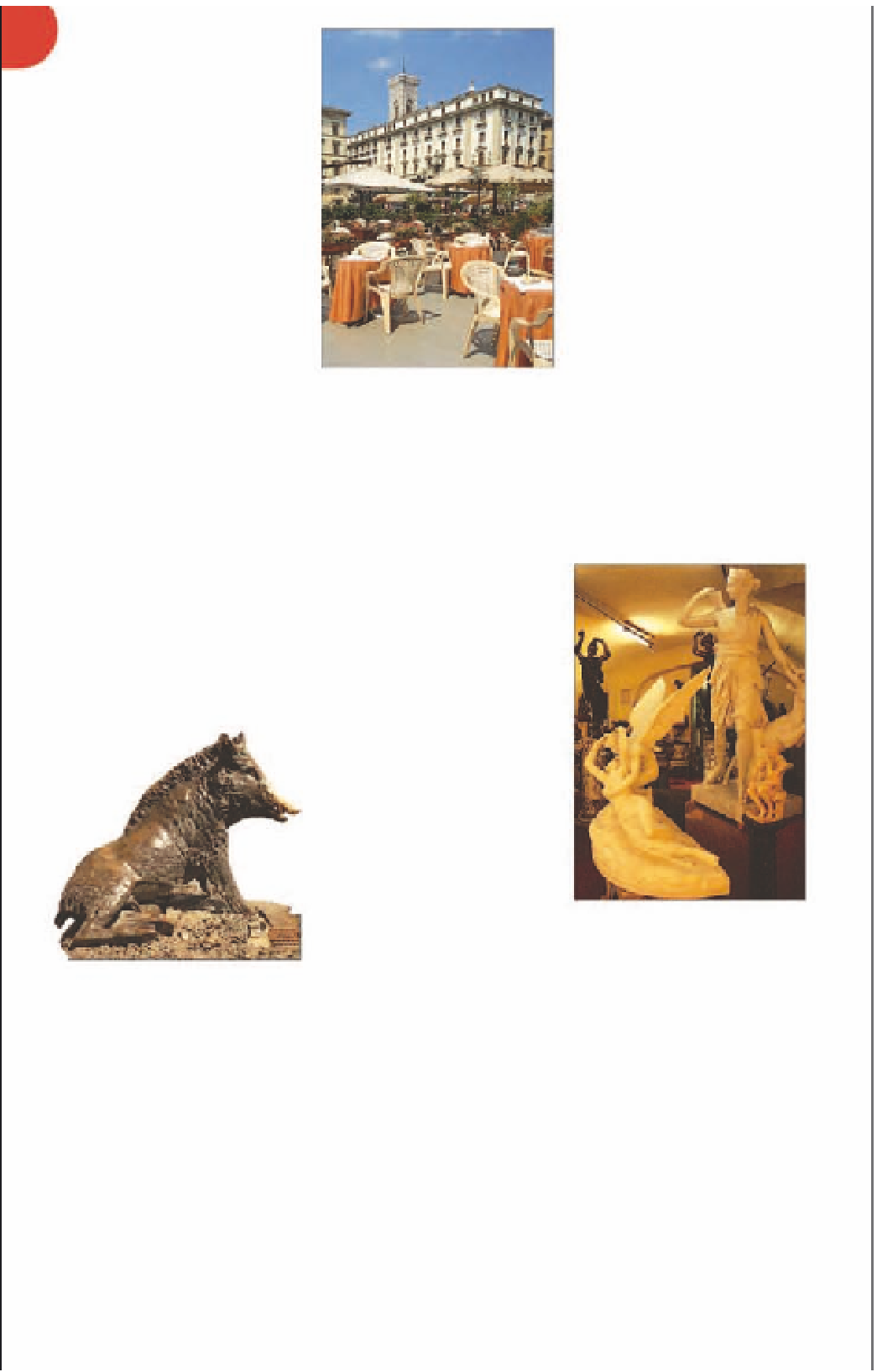Travel Reference
In-Depth Information
Mercato Nuovo
w
Map
3 C1 (6 D3).
palazzi
of Florence. It was
acquired by the Antinori
family in 1506 and has
remained with them since.
The family owns large and
productive estates all over
Tuscany and in the neigh-
bouring region of Umbria,
producing a range of well-
regarded wines, olive oils and
liqueurs. You can sample
these in the frescoed wine bar
to the right of the courtyard,
the Cantinetta Antinori.
The wine bar also
specializes in typical Tuscan
cuisine, with dishes such as
crostini alla toscana,
together
with traditional cheeses and
a range of other produce
from the Antinori estates.
Apr-Oct:
9am-7pm daily; Nov-Mar:
9am-7pm Tue-Sat.
#
The Mercato Nuovo (New
Market) is sometimes called
the “Straw Market” because
goods woven out of straw,
such as hats and baskets,
were sold here from the end
of the 19th century until the
1960s. In fact, it was
originally built in 1547-51 as
a central market for silk and
other luxury goods. Today's
stallholders sell leather goods
and souvenirs, and on
summer evenings buskers
gather to entertain visitors.
To the south of the market
is a little fountain called Il
Porcellino. This is a 17th-
century copy in bronze of the
Roman marble statue of a
wild boar that can be seen in
the Uffizi. Its snout gleams
like gold, thanks to the
superstition that any visitor
who rubs it will return to
Florence some day. Coins
dropped in the water basin
below are collected and
distributed to
the city's
charities.
One of the many pavement cafés in
Piazza della Repubblica
the fact that Florence was
then the capital of Italy. The
demolition of the Old Market
was intended as the first step
in a wholesale remodelling of
Florence, but leading mem-
bers of the English community
led an international campaign
opposing this grand scheme,
which would have led to the
destruction of almost every
historic building in the city
centre. Fortunately, the
campaign was successful and
the demolition halted.
The square, popular with
both tourists and locals, is
lined with pavement cafés,
such as the very smart Gilli
(No. 39r) or the Giubbe Rosse
(No. 13-14r), so called
because of the red jackets of
the waiters. In the early part
of this century, the Giubbe
Rosse was the haunt of writers
and artists, including those of
Italy's avant-garde Futurist
movement. Rinascente, one of
Florence's department stores
(see p287)
, is on the eastern
side of the square.
Via dei Fossi
t
Map
1 B5 (5 B3).
Shop in Via dei Fossi selling
reproduction statuary
Via dei Fossi and the nearby
streets contain some of
the most absorbing shops
in Florence, many of them
specializing in antiques and
works of art and statuary, and
in classic Florentine products.
Bottega Artigiana del Libro
(Lungarno Corsini 40r) stocks
handmade marbled papers,
albums, notebooks and
carnival masks. Fallani Best
(Borgo Ognissanti 15r) has
Art Nouveau and Art Deco
furnishings and sculpture,
and Antonio Frilli (Via dei
Fossi 26r) specializes in marble
sculpture - original Art
Nouveau works and copies of
famous Renaissance pieces.
Neri (Via dei Fossi 57r) also
Bronze boar in Mercato Nuovo
Piazza della
Repubblica
e
Map
1 C5 (6 D3).
Palazzo Antinori
r
Piazza Antinori 3.
Map
1 C5 (5 C2).
¢
Until 1890, when the present
square was laid out, this had
been the site of the Mercato
Vecchio (Old Market) and
before that of the ancient
Roman forum. A single
column from the old market
still stands on the square,
topped by an 18th-century
statue of Abundance.
Dominating the western side
of the square is a triumphal
arch built in 1895 to celebrate
to the public.
Cantinetta
Antinori
Tel
055 29 22 34.
12:30-2:30pm, 7-10:30pm Mon-
Fri (also open 12 Saturdays a year at
the manager's discretion).
#
0 /
The Palazzo Antinori,
originally the Palazzo Boni e
Martelli, was built in 1461-6
and with its elegant courtyard
is considered one of the
finest small Renaissance





































